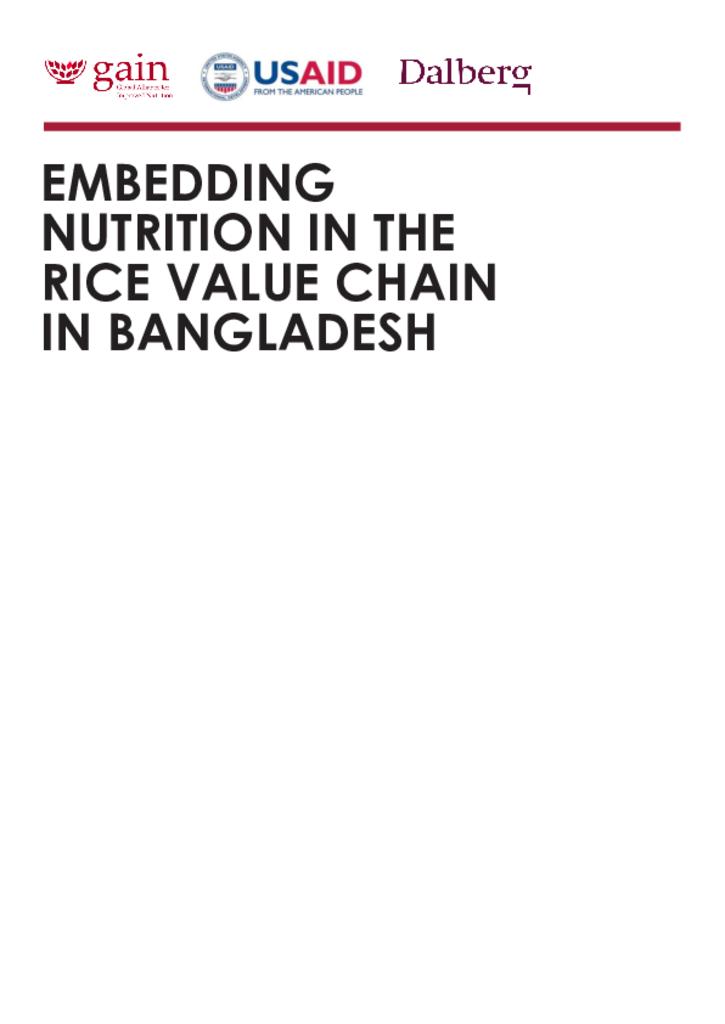Numerous rice value chain studies have been conducted over the years, but few focus specifically on how rice can be used as a vehicle to promote nutrition. In 2012–2013, with the support of the U.S. Agency for International Development (USAID) and its national and global partners, the Global Alliance for Improved Nutrition (GAIN) engaged in a series of comprehensive technical and market feasibility studies in Bangladesh to explore how modifications in rice cultivation and processing could improve the nutritional density of rice.
Given the widespread deficiency of zinc in Bangladesh, and the lack of national prevention programs, this work focused specifically on increasing the zinc content of the rice grain. The findings from these studies suggest that there is a portfolio of options that can and should be considered as part of an agriculture-nutrition strategy in Bangladesh. Fortificant soaking (i.e. adding zinc fortificant to soaking water during the parboiling process) presents the most convincing way to embed nutrition into the agricultural rice value chain, as it has a high potential to improve nutritional impact across a range of rice varieties. Reduced milling could be considered an additive concept as it is not a technically complex idea, but it has limited nutritional impact. Zinc fertiliser offers interesting opportunities to improve nutritional outcomes, primarily in rural areas, and is highly cost-effective.
Our research confirmed that parboiling conditions, which may result in larger amounts of some nutrients being transferred into the rice grain, have a negligible effect on increasing rice zinc content. Each concept has its merits and challenges, and, depending on the resources and timeline available, multiple concepts can be pursued in parallel with each other, with the potential to improve the health and livelihoods of a significant proportion of the Bangladesh population suffering from micronutrient malnutrition.
